An update from the Giant Armadillo Conservation Program
14/11/2019 in Conservation
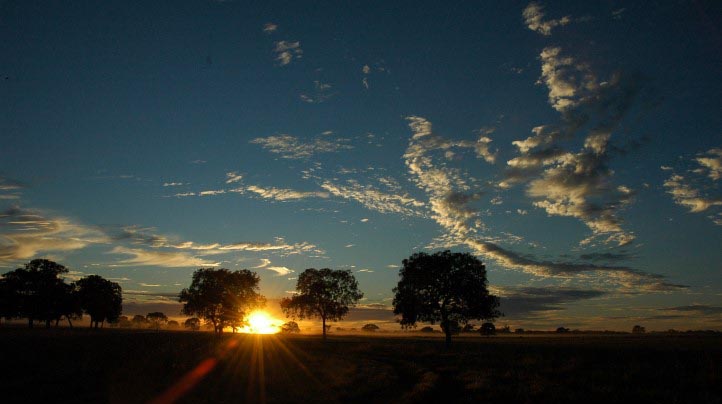
A view of the Pantanal
Dear Supporters of the Giant Armadillo Conservation Program,
It is hard to start this update without commenting on recent events in Brazil. What has happened in the Amazon Rainforest is apocalyptic. At their peak in August, the fires burnt at the highest rate since the country's space research centre, the National Institute for Space Research (INPE), began tracking them in 2013. This has also been happening in the Cerrado, in the Pantanal and neighbouring Bolivia and Paraguay. The worst part is these fires are just one consequence of dismantling environmental policy and funding. It is incredibly hard to remain optimistic, and very easy to wonder how we continue.
That said, the commitment I made to the species, to our partners (both nationally and internationally), and the very team I lead has kept me focused and unwavering. I am participating in more meetings with other NGOs, have been more involved with the university, we are sharing as much of our results and data as possible, and are working hard on several key publications. Finally, I am encouraged by the growth and impact of our education program and work,` there is such a need for this that we will soon be hiring an assistant educator. With all this in mind, it is with an extra amount of gratitude for your support that I share with you our progress in these difficult times.
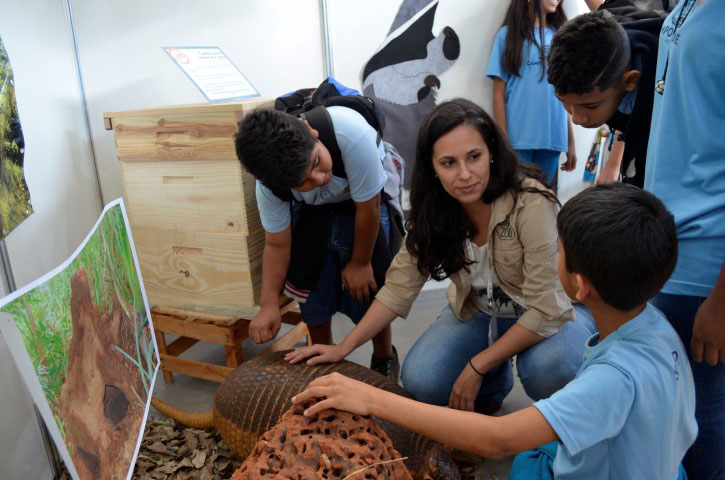
Brazilian Science Fair in July
Since the last update we ran two expeditions in the Pantanal. In June we welcomed Yamil di Blanco, our partner from Argentina, who started his own giant armadillo project in the Chaco. He had first come to train with us three years ago and came back to discuss camera trapping techniques and get more first-hand experience with the team. We are so happy that Yamil is committed to giant armadillo conservation, and our expedition was a very exciting one with several nights spent out in the field. After two nights waiting for an animal to enter the trap, a freshly dug burrow only 300m away was located. That night the team stood in the middle of a flooded grassland with two antennas, each pointing at a trap to alert them if an animal entered. From that new burrow, a new female giant armadillo was caught and named Blanca (in honour of Yamil Di Blanco). The other animal never left the burrow and after 7 nights the team tried unsuccessfully to catch it by hand. Due to the area and very skittish behaviour, we suspect that animal could be Liana or Houdini.
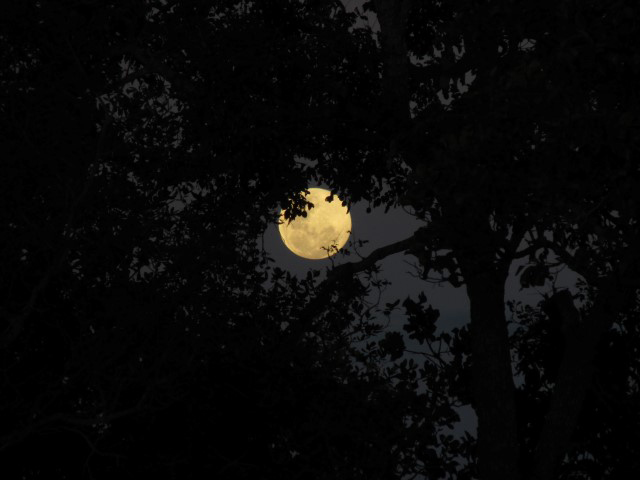
A nighttime expedition in the Pantanal
Another animal was then caught near Tex’s home range. This adult female is a bit underweight and smaller than expected but has bred. She was named Mazebotti by the ranch-owners children, and amusingly none of us know what the name means! Besides Renee, who seems to have dispersed, all the other animals we have been monitoring were located and health checked through camera traps. Mafalda, who is just a little older than Renee has dispersed two ranches away from her original home range. Gabriel continued visiting neighbouring ranches and testing the new educational materials. We are continuing to search for Renee, but she still has not been located. I really hope we find her. If giant armadillos disperse like giant anteaters, which can be over 100km, I worry we will never know what has happened to her.
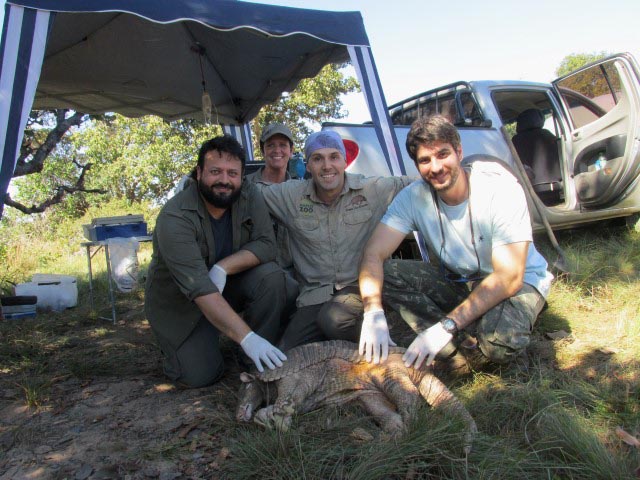
Giant Armadillo team with Yamil di Blanco (Left)
In July we welcomed Lucas Mendez as a trainee. We are hoping that Lucas will join our team and help with the work we want to do in the Atlantic forest next year. Unfortunately the expedition did not start well. Amanda, a female giant armadillo that had appeared healthy on camera traps just three weeks earlier, was found emaciated in a half dug burrow. The team brought her to the lab, but sadly she died. Debora Yogui, our veterinarian from the Anteaters & Highways project was able to perform a full post-mortem and we now await the results. The loss of a giant armadillo is very traumatic for us all, but we are grateful that this procedure gives us the opportunity to understand the cause of death.
It always seems that when something bad happens in the project, something good follows! Having found Amanda so sick the team did not collect camera traps from her area. It took them several days to go back, but to their surprise when checking one of the camera traps they caught an image of a mother walking by with her offspring! Unbelievable! From experience we know that nesting burrows are on average 200m from each other, and the animal was easily located. While the 5-7-month-old pup does not have a name yet, the female has been named Gala and we are so excited to follow her!
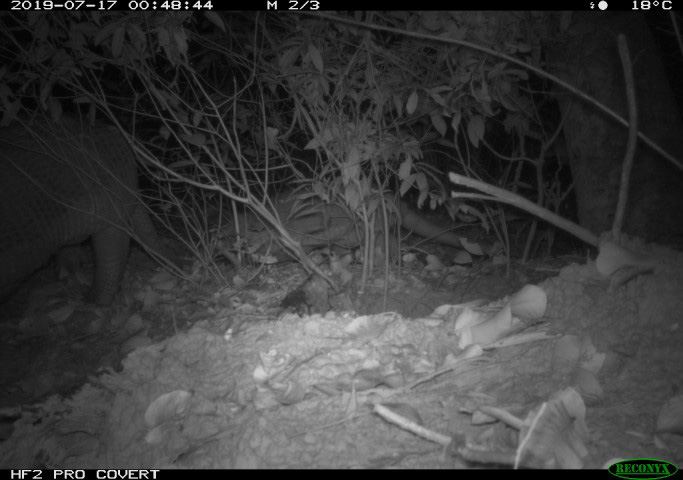
First image of new baby giant armadillo
Last but not least, our Armadillos and Honey project is making progress, albeit slowly. We have documented local extinctions of giant armadillos in the Cerrado biome due to a conflict with beekeepers. Beekeepers work in the last remnants of native habitat and are key stakeholders and partners to lobby for the preservation of native habitat. However, giant armadillos are being killed by beekeepers as the animals destroy their hives to consume the larvae. The main goal of this project is to eradicate the conflict between beekeepers and giant armadillos, so that retaliatory killing of giant armadillos is stopped, and beekeepers benefit from the presence of giant armadillos through a wildlife-friendly certification scheme. Certification would be available for beehives that use mitigation measures to prevent giant armadillo predation, and will also open new markets for products. I have attended some beekeeper association meetings and the idea has been enthusiastically received. We have just put in a new funding application for the project, and hope to accelerate progress soon.
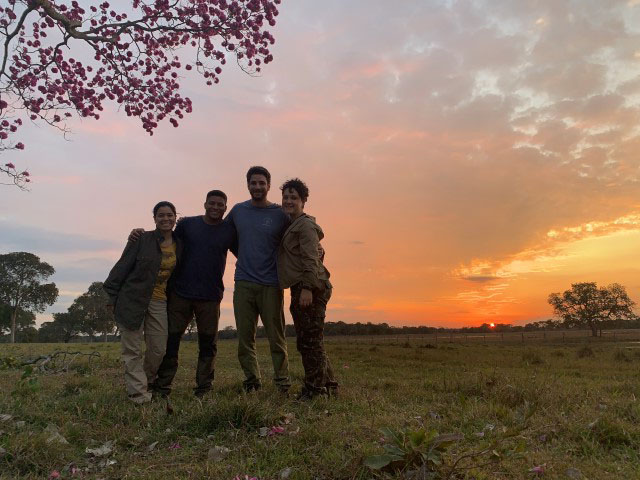
Giant Armadillo team in the Pantanal
Once again thank you so much to each and every one of you for supporting and believing in our work. We appreciate it more than you know, especially in these difficult times.
Arnaud
We would like to thank the players of People’s Postcode Lottery for their generous support which has helped this project.

Featured Articles

An update from the Budongo Forest
19/04/2024 in Conservation

Edinburgh Zoo named best zoo in Scotland
15/04/2024 in Edinburgh Zoo

























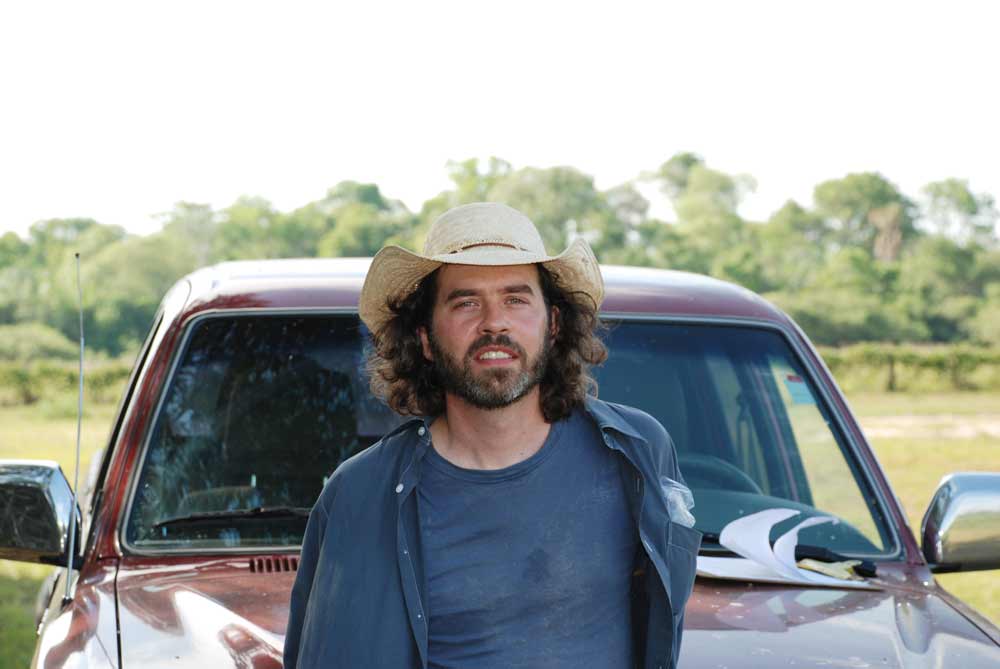
Follow EZ